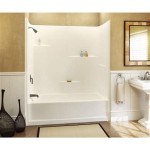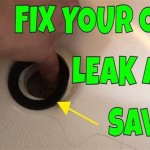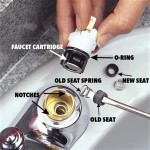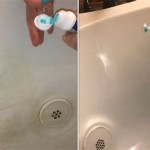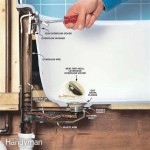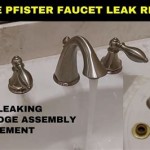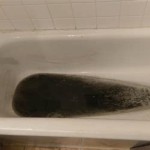How To Drain A Bathtub Full Of Water
Draining a bathtub full of water is a routine task, often overlooked until a clog or slow drainage necessitates intervention. Understanding the mechanics of bathtub drainage and the various methods available can help address common issues and maintain efficient water flow.
The most common method of draining a bathtub involves the lift-and-turn or push-and-pull drain stopper located at the foot of the tub. This stopper is connected to a linkage assembly beneath the tub, which controls a pop-up drain plug. Rotating or pushing/pulling the stopper actuates the linkage, raising or lowering the plug and allowing water to flow down the drain. Some tubs utilize a trip lever, typically located on the overflow plate, which operates the linkage via a cable connection.
Once the drain is open, gravity facilitates the flow of water through the drain pipe. This pipe connects to the home's main drainage system, eventually leading to the municipal sewer or septic system. The rate at which the tub drains is influenced by factors such as the diameter of the drain pipe, the presence of any obstructions, and the overall health of the plumbing system.
Slow draining can indicate a partial clog in the drain pipe. Hair, soap scum, and other debris can accumulate over time, restricting water flow. Addressing a slow drain often begins with removing the drain stopper. Depending on the stopper type, this may involve unscrewing a retaining nut or simply pulling the stopper upwards with some force. Once removed, the drain opening can be inspected for visible obstructions, which can often be removed manually or with the assistance of tools like pliers or a bent wire hanger.
If removing surface debris does not resolve the slow drain, a plunger can be employed. A cup plunger, characterized by its flat rubber cup, creates a seal over the drain opening. Pushing and pulling the plunger generates pressure within the drainpipe, dislodging obstructions and restoring water flow. Ensure the plunger cup is fully submerged in water to create an effective seal. Adding a small amount of water to the tub may be necessary if the existing water level is insufficient.
For more stubborn clogs, a chemical drain cleaner may be considered. These cleaners contain harsh chemicals that dissolve hair, soap scum, and other organic matter. It is crucial to follow the manufacturer's instructions carefully when using chemical drain cleaners, as they can be corrosive and potentially harmful. Adequate ventilation is essential, and protective gear such as gloves and eye protection should be worn. Always consider the environmental impact of chemical cleaners and explore eco-friendly alternatives when possible.
An alternative to chemical drain cleaners is a mixture of baking soda and vinegar. This combination creates a fizzing reaction that can help break down clogs. Pour one cup of baking soda down the drain, followed by one cup of vinegar. Allow the mixture to fizz for about 30 minutes before flushing the drain with hot water. This method is generally less aggressive than chemical cleaners but may not be as effective for severe clogs.
If plunging and drain cleaning solutions fail to resolve the issue, a drain snake or auger can be utilized. A drain snake is a flexible cable with a coiled end that can be inserted into the drain pipe to break up or retrieve obstructions. Feed the snake into the drain opening, rotating it as it advances through the pipe. Once resistance is encountered, continue rotating the snake to break up the clog. Retract the snake periodically to remove any collected debris.
If these methods do not resolve the drainage issue, the problem may reside deeper within the plumbing system. In such cases, consulting a qualified plumber is recommended. A plumber possesses the expertise and specialized tools to diagnose and address complex plumbing issues, ensuring the proper functioning of the drainage system.
Preventative measures can significantly reduce the occurrence of clogs and maintain efficient drainage. Regularly cleaning the drain stopper and removing visible debris can prevent accumulation. Installing a hair strainer over the drain opening can trap hair and other particles before they enter the drain pipe. Flushing the drain with hot water after each use can help dissolve soap scum and prevent buildup.
Understanding the mechanics of bathtub drainage and employing appropriate methods for clearing clogs can empower homeowners to address common plumbing issues effectively. By utilizing appropriate tools and techniques, and implementing preventative measures, maintaining a freely draining bathtub is achievable.

How To Easily Unclog Bathtub Shower Drain In 5 Minutes Jonny Diy
How To Unclog My Bathtub Drain With Standing Water In It Quora

How To Unclog A Shower Drain Without Chemicals Diy Family Handyman

How To Unclog A Bathtub Drain Without Chemicals

How To Unclog A Bathtub Drain With Standing Water Naturally

How To Unclog A Bathtub Drain 11 Diy Clog Busters

How To Unclog A Shower Drain With Standing Water Best S
How To Unclog My Bathtub Drain With Standing Water In It Quora

Here S Why Water Backs Up Into Your Tub American Home Air

How To Unclog A Bathtub Diyer S Guide Bob Vila
Related Posts

